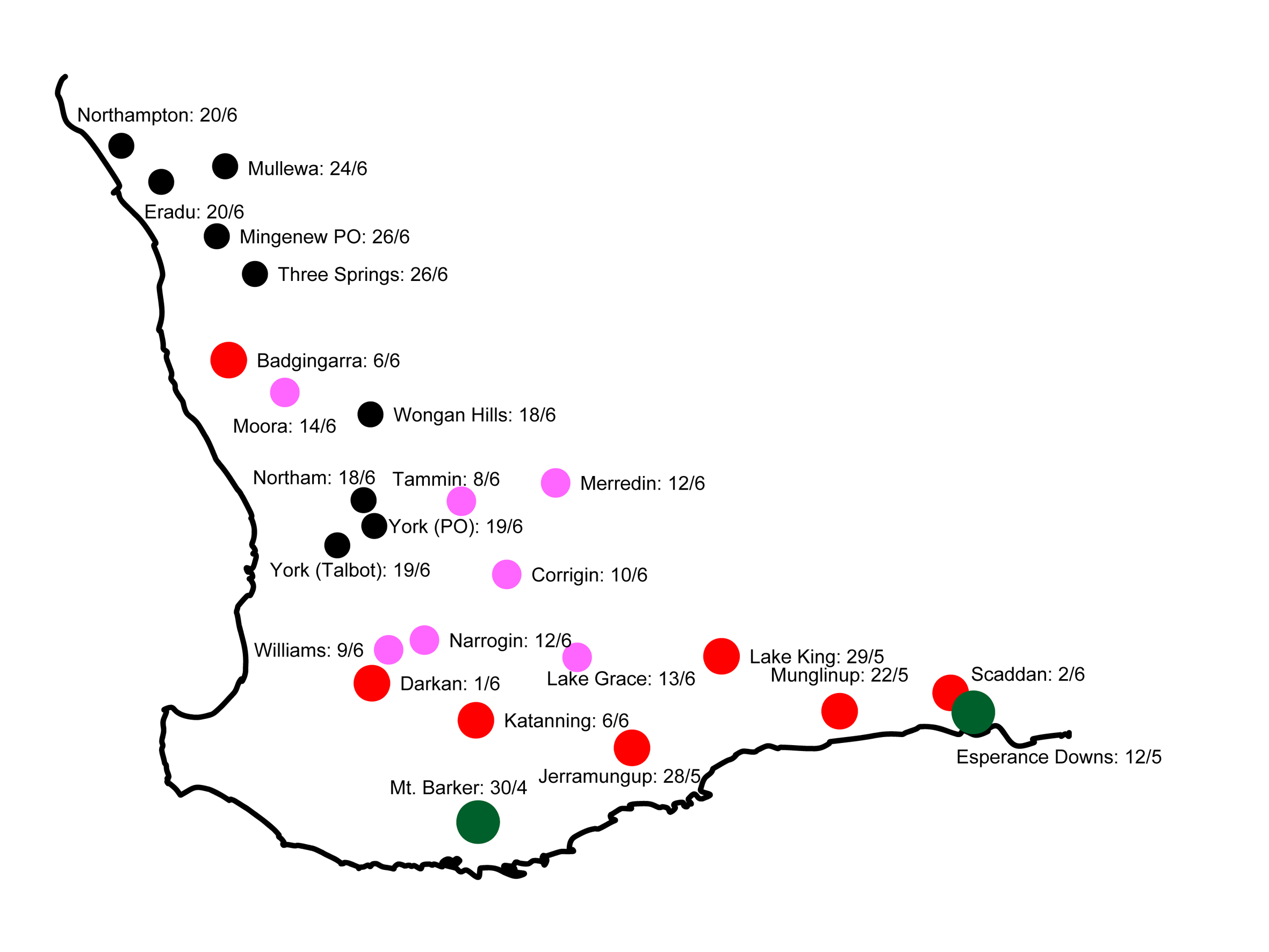Western Australia
May 19, 2015

Predicted dates of canola blackleg spore maturity for locations in Western Australia, as at 13 May 2015
Canola growers have been urged to consult the Department of Agriculture and Food’s latest Blackleg Sporacle model to determine what action they may need to take to protect their crop from this potentially devastating disease.
Blackleg is a fungal disease that produces spore showers from canola stubble after autumn and winter rainfall, infecting new crops and with the potential to cause yield losses of more than 50 per cent in worst case scenarios.
Blackleg Sporacle is an online tool, updated weekly, for 25 locations across the Wheatbelt, that predicts the date when spore maturity will be achieved, after which spore showers can occur.
The risk of canola seedling exposure to spore showers for a given location is then categorised to be high, medium and low relative to the time of sowing.
Overall disease pressure in a canola paddock planted this year will vary depending on the time of spore release, variety resistance, paddock history and proximity to a previous year’s canola stubble.
Department plant pathologist Ravjit Khangura said in order to optimise yields, growers would be wise to protect their crops until the six leaf stage.
“Up until this stage canola plants are vulnerable to blackleg infection,” Dr Khangura said.
“Growers in higher risk situations – for example sowing in close proximity to infected stubbles, using more susceptible varieties, not using a fungicide seed dressing or fungicide applied with fertiliser, and sowing late – still have the opportunity up until the six leaf stage to decide whether to apply a foliar fungicide to protect their crops.”
After the six leaf stage the risk of infection is much lower but yield loss may still occur with susceptible varieties.
Dr Khangura suggested growers review the Blackleg Sporacle regularly to ensure they had the latest information.
“Blackleg Sporacle is based on the rainfall and temperatures, to date, collected via the department’s weather stations, as well as anticipated rainfall of four millimetres or greater per week over coming weeks,” she said.
“As weekly rainfall will change as the season progresses, so will the model’s predictions, so it is important for growers to regularly revisit the department’s website for the latest prediction.”
Blackleg Sporacle was developed by the department with the support of the Grains Research and Development Corporation, and is based on four years of epidemiology research on the timing of fruiting bodies’ maturity and spore release pattern throughout the Wheatbelt.
According to a GRDC report, blackleg has the potential to cost the WA canola industry more than $175 million per annum not controlled. Presently, the estimated annual cost of blackleg is nearly $60 million.
To view the latest canola blackleg spore maturity forecast for WA visit the department website agric.wa.gov.au and search for ‘crop disease forecast 2015’.
View the latest canola blackleg spore maturity forecast for WA.